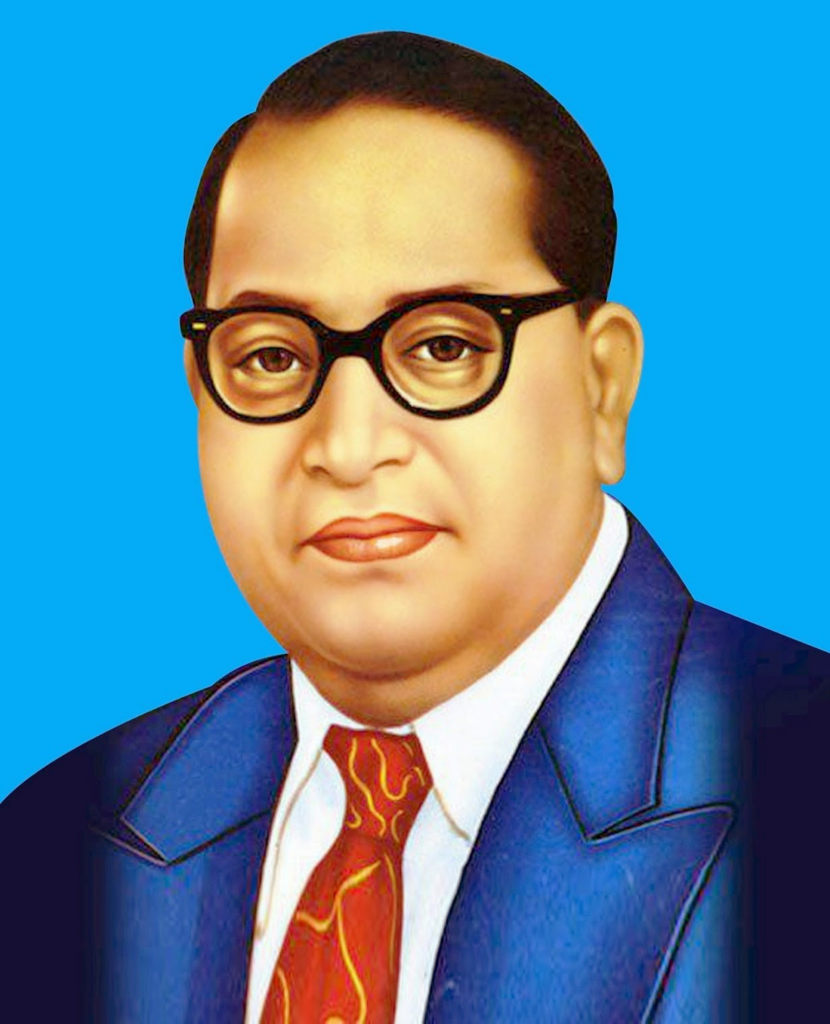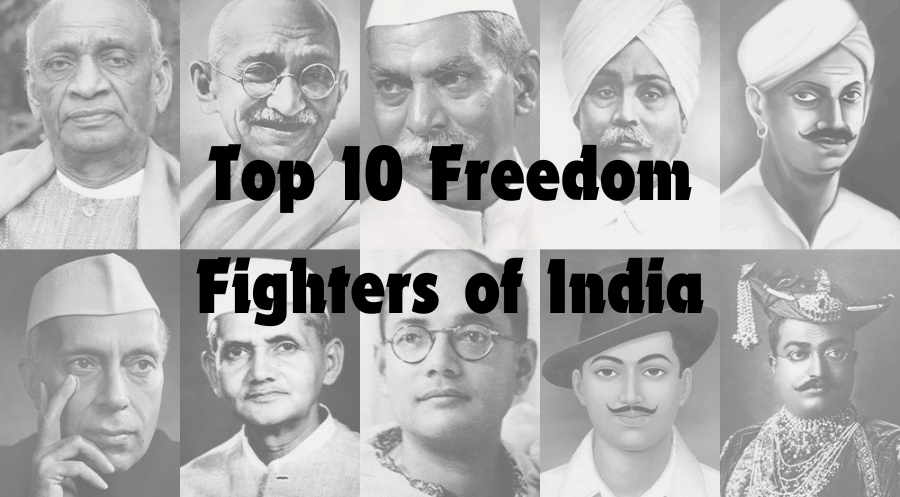Introduction
India’s struggle for independence is a saga of bravery, determination, and sacrifice. Over the years, many courageous souls stood against colonial oppression to secure the freedom we enjoy today. This article pays tribute to the top 10 freedom fighters of India, whose contributions were instrumental in shaping the nation’s destiny.
Mahatma Gandhi

Early Life
Mohandas Karamchand Gandhi, fondly known as Mahatma Gandhi, was born on October 2, 1869, in Porbandar, Gujarat. He studied law in London and later moved to South Africa to practice.
Role in Independence Movement
Gandhi returned to India in 1915 and soon became the leader of the Indian National Congress. He pioneered non-violent resistance and civil disobedience movements like the Salt March and Quit India Movement, which mobilized millions of Indians against British rule.
Legacy
Gandhi’s principles of non-violence and truth have inspired global movements for civil rights and freedom. His birthday is celebrated as Gandhi Jayanti, a national holiday in India, and the International Day of Non-Violence.
Jawaharlal Nehru

Early Life and Education
Born on November 14, 1889, in Allahabad, Nehru was educated at Harrow and Cambridge. He became a barrister and returned to India, where he was influenced by Gandhi.
Political Career
Nehru joined the Indian National Congress and quickly rose to prominence. He played a pivotal role in the civil disobedience movement and was imprisoned several times by the British.
Contribution to Freedom Struggle
As the first Prime Minister of independent India, Nehru laid the foundation for a secular and democratic nation. His vision for modern India included industrialization, scientific advancement, and social reforms.
Subhas Chandra Bose

Early Life and Education
Subhas Chandra Bose, popularly known as Netaji, was born on January 23, 1897, in Cuttack, Odisha. He was an exceptional student and later went to England to prepare for the Indian Civil Services.
Indian National Army
Disillusioned with the Congress’s non-violent approach, Bose sought to fight British rule through armed struggle. He formed the Indian National Army (INA) with the help of Japan during World War II.
Azad Hind Fauj
Bose’s famous call, “Give me blood, and I shall give you freedom,” galvanized many to join the INA. Despite its eventual defeat, the INA’s efforts significantly boosted the morale of Indian freedom fighters.
Bhagat Singh

Early Life
Bhagat Singh was born on September 28, 1907, in Banga, Punjab. From a young age, he was influenced by the nationalist movement and the Jallianwala Bagh massacre.
Revolutionary Activities
Singh joined the Hindustan Socialist Republican Association and was involved in several acts of defiance against the British, including the bombing of the Central Legislative Assembly in Delhi.
Martyrdom
Bhagat Singh was arrested and executed on March 23, 1931, at the age of 23. His bravery and sacrifice made him a martyr and an enduring symbol of resistance against oppression.
Rani Lakshmibai

Early Life
Rani Lakshmibai, the Queen of Jhansi, was born on November 19, 1828, in Varanasi. She was named Manikarnika and was later married to Maharaja Gangadhar Rao of Jhansi.
Role in 1857 Revolt
During the 1857 Revolt, she led her troops with unparalleled courage against the British forces. Her leadership and valor during the siege of Jhansi are legendary.
Legacy
Lakshmibai became an icon of Indian nationalism and women’s empowerment. Her heroism is celebrated in folklore, literature, and history.
Sardar Vallabhbhai Patel

Early Life
Born on October 31, 1875, in Nadiad, Gujarat, Patel was a prominent lawyer. He was deeply influenced by Gandhi’s principles of non-violence and satyagraha.
Role in Indian National Congress
Patel was instrumental in organizing peasants in Gujarat in non-violent campaigns against oppressive policies. He played a key role in the Quit India Movement and was a close associate of Gandhi.
Read Also:- Business for Ladies with Low Investment
Integration of Princely States
As the first Deputy Prime Minister and Home Minister of India, Patel unified over 500 princely states into the Indian Union, earning him the title “Iron Man of India.”
Bal Gangadhar Tilak

Early Life
Bal Gangadhar Tilak was born on July 23, 1856, in Ratnagiri, Maharashtra. He was a scholar, teacher, and nationalist who inspired many through his writings and speeches.
Role in Indian National Movement
Tilak was one of the first leaders to demand complete self-rule (Swaraj). He launched the slogan “Swaraj is my birthright and I shall have it” and organized several protests and movements against British rule.
Legacy
Tilak’s fiery nationalism and efforts in promoting education and social reforms left a lasting impact on India’s independence movement. He is remembered as Lokmanya Tilak, a leader respected by all.
Lal Bahadur Shastri

Early Life
Born on October 2, 1904, in Mughalsarai, Uttar Pradesh, Shastri was known for his simplicity and dedication. He joined the freedom movement inspired by Gandhi’s call for non-cooperation.
Political Career
Shastri held various significant positions, including Prime Minister of India. He was known for his integrity and humility, earning immense respect from his peers and the public.
Role in Independence Movement
Shastri actively participated in the Salt March and Quit India Movement. His slogan “Jai Jawan Jai Kisan” during the Indo-Pak war of 1965 became immensely popular.
Sarojini Naidu

Early Life
Sarojini Naidu, known as the Nightingale of India, was born on February 13, 1879, in Hyderabad. She was a gifted poet and an influential leader.
Role in Freedom Movement
Naidu was a prominent figure in the Indian National Congress and worked closely with Gandhi. She participated in the Salt March and was arrested several times for her activism.
Contribution to Women’s Rights
Naidu was a staunch advocate for women’s emancipation and played a significant role in the establishment of the All India Women’s Conference. She became the first woman to serve as the President of the Indian National Congress and the Governor of Uttar Pradesh.
Dr. B.R. Ambedkar

Early Life and Education
Dr. Bhimrao Ramji Ambedkar was born on April 14, 1891, in Mhow, Madhya Pradesh. He faced severe discrimination but overcame it to become a leading scholar and politician. He studied at prestigious institutions like Columbia University and the London School of Economics.
Role in Drafting Indian Constitution
As the chairman of the Drafting Committee, Ambedkar played a pivotal role in framing the Indian Constitution, which enshrined principles of equality, liberty, and justice.
Contribution to Social Justice
Ambedkar fought tirelessly for the rights of Dalits and other marginalized communities. His efforts towards social reforms and his advocacy for equality have left a profound impact on Indian society.
Conclusion
The journey to India’s independence is marked by the sacrifices and relentless efforts of these and many other freedom fighters. Their legacy continues to inspire generations, reminding us of the value of freedom and the power of collective action.
FAQs
- Who was the most influential freedom fighter of India?
- Mahatma Gandhi is often considered the most influential freedom fighter due to his non-violent approach and mass mobilization tactics.
- What was Subhas Chandra Bose’s role in India’s freedom struggle?
- Bose formed the Indian National Army and sought to fight British rule through armed struggle, significantly impacting the freedom movement.
- How did Bhagat Singh contribute to India’s independence?
- Bhagat Singh’s revolutionary activities and ultimate sacrifice made him a martyr and an enduring symbol of resistance against British rule.
- Why is Dr. B.R. Ambedkar important in Indian history?
- Dr. Ambedkar was the principal architect of the Indian Constitution and a champion of social justice, advocating for the rights of marginalized communities.
- What was the significance of Rani Lakshmibai in the 1857 Revolt?
- Rani Lakshmibai’s leadership and bravery during the 1857 Revolt made her an icon of resistance and women’s empowerment in Indian history.

